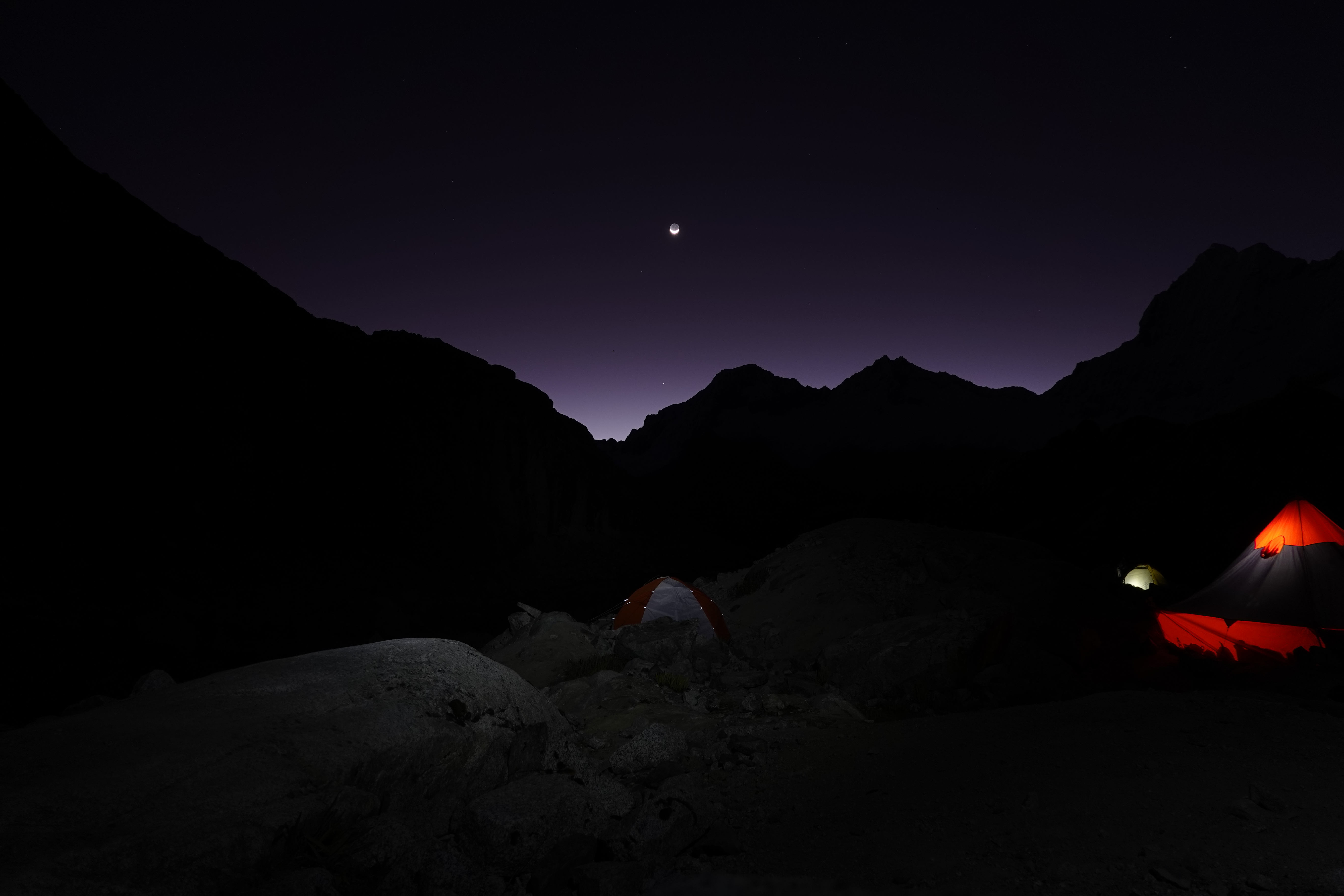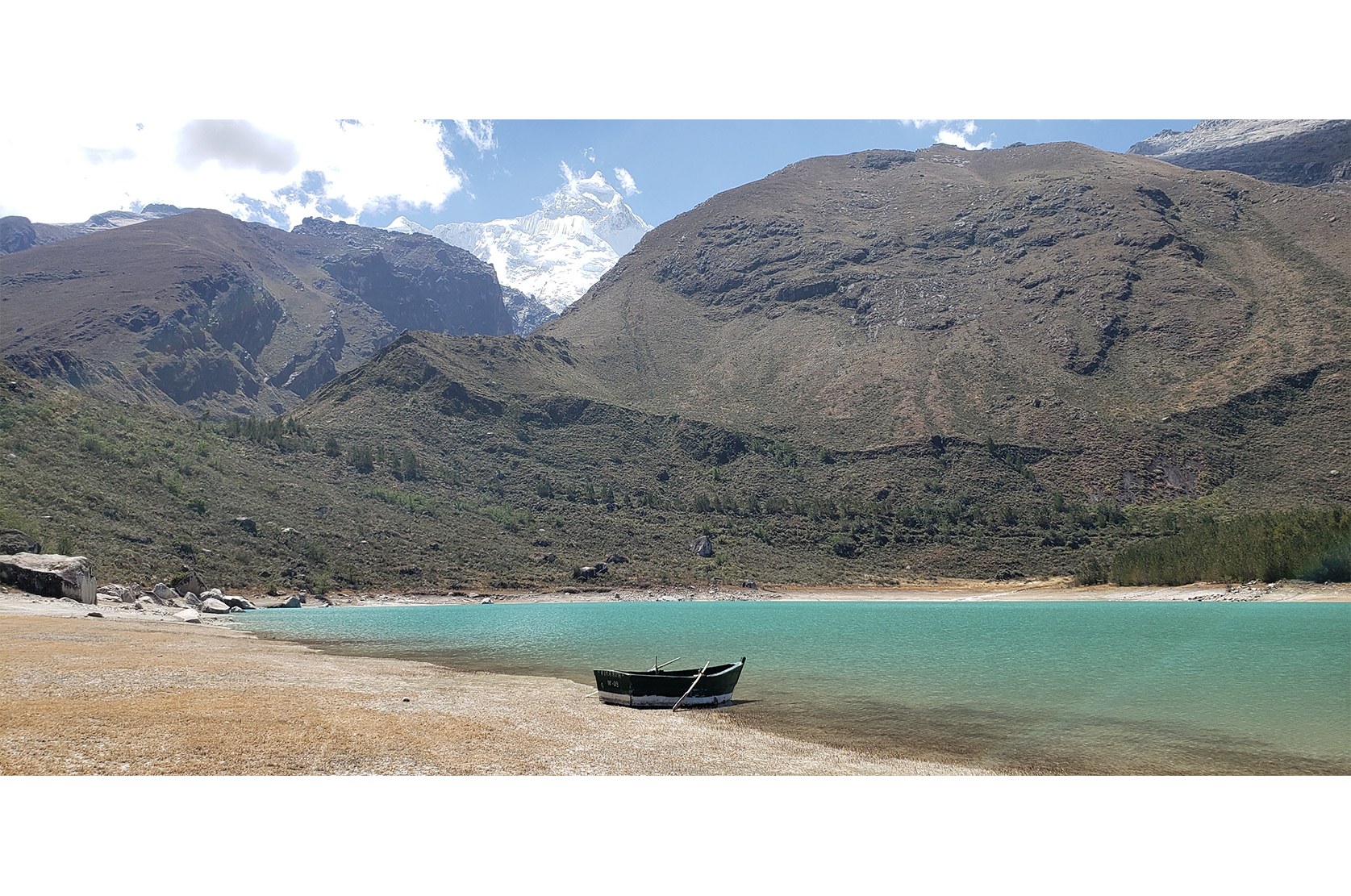There are moments in life when it is necessary to visit places that are dramatically different and bigger than your daily environment in to reset the internal compass and focus. My “place” is the Mountains; sometimes close to home, sometimes far away, sometimes high, and sometimes extremely high, and almost always with a blanket of snow and ice. I had the opportunity to travel to the Peruvian Andes and was lucky enough to participate in some extreme-altitude mountaineering in the Cordillera Blanca.
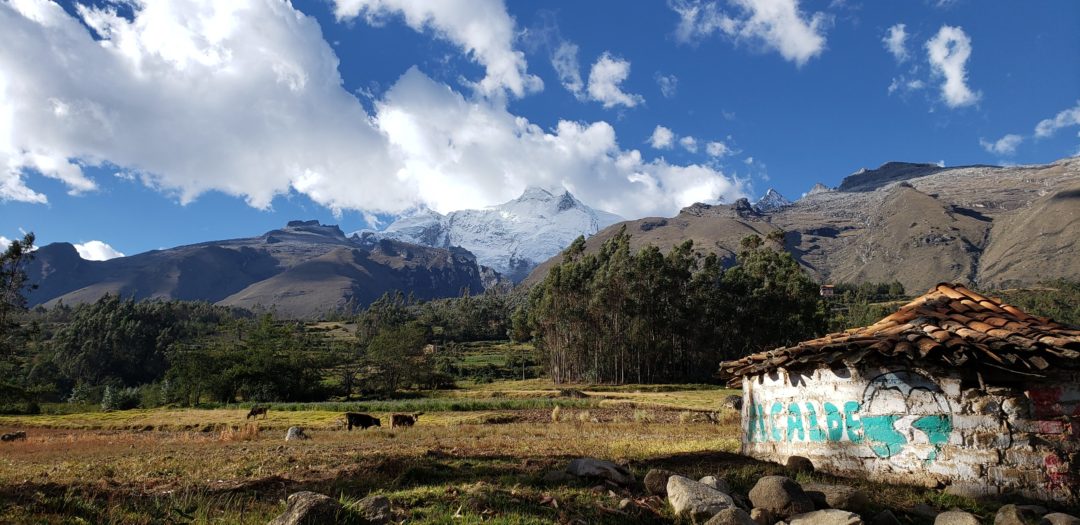
The Cordillera Blanca is a strange combination of an arid landscape with rushing, ice-melt fed rivers all set below towering glaciated peaks making it the most extensive tropical ice-covered mountain range in the world. The photos taken in the Huascaran National Park and abutting villages simply cannot convey the stunning and contrasting natural and built landscapes. Most cities and villages are nestled within the valley walls of the mountain ranges creating a dense, geometric hustle and bustle of people, cars, scooters, bikes, animals, dogs, crowing roosters, open markets, and everything in between that represent the classic landscape of most developing countries. I have always had a soft spot for Latin America after living in the Yucatan Peninsula in the late 90’s, and I was not disappointed by my return to South America 20-years later. I was deeply comforted by the warmth and familiarity of the Peruvian people in the City of Huaraz, which served as our home base for our expeditions.

In between our mountain summit attempts, we enjoyed visits to the Keushu Ruins in Yungay, where the tropical blue lake with the lonely row boat relaxed in stark contrast to the magnificent peak of Huandoy (20,866’ high) in the background; the creature comforts and fabulous courtyard view from our Ozala’s Guesthouse balcony; and the authentic agricultural lifestyle of herders and farmers that permeates the Huascaran Region.
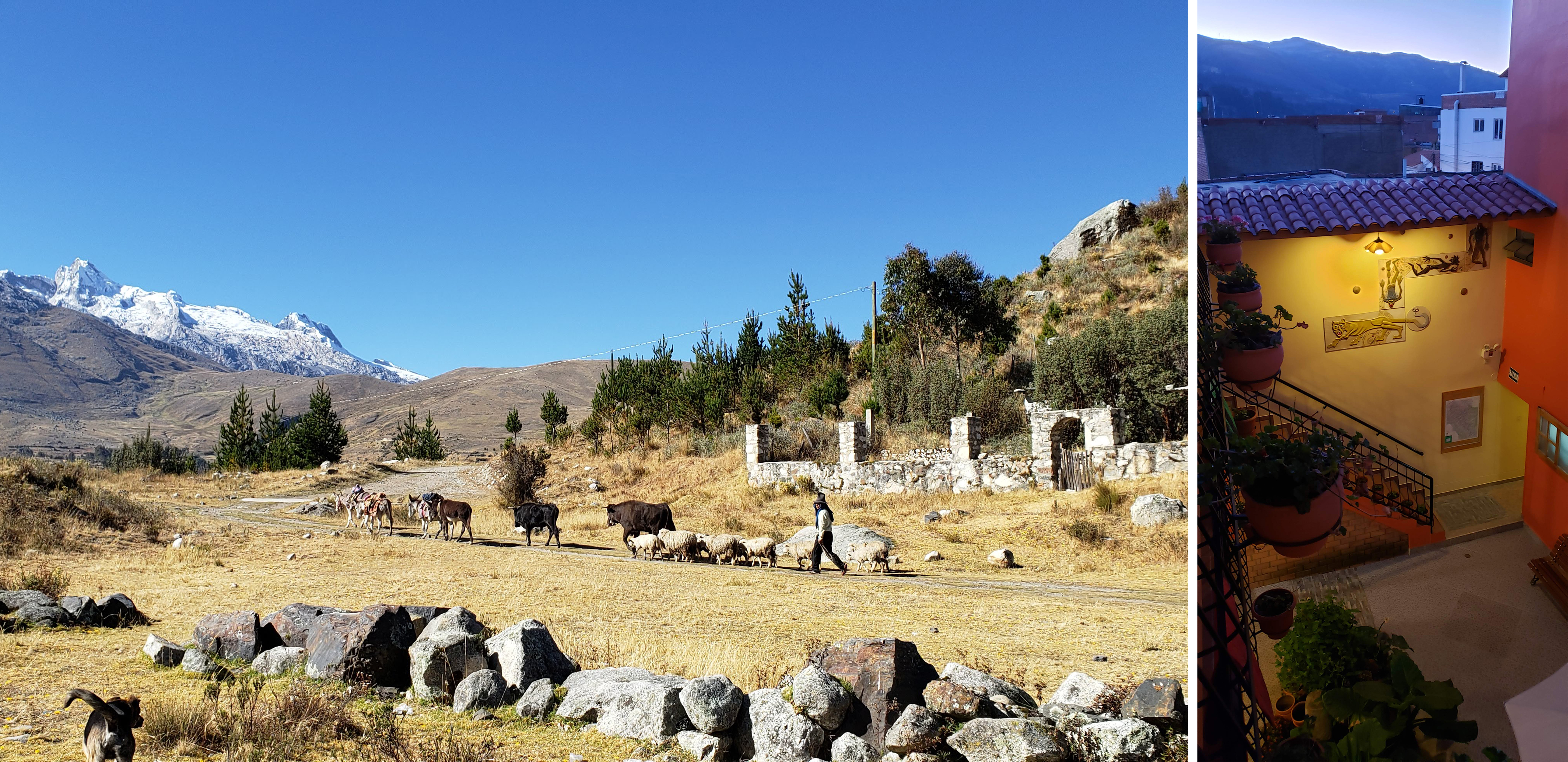
During our travels we came upon numerous indigenous herders, both men and women, on foot moving their sheep, lamas, donkey, and cattle in and out of the National Parks where they retain land and water rights to these parklands. The relationship between the National Park and the farmers is an interesting and complex dynamic that is far more dimensional than this gringa could ever understand or explain; let’s just say that you needed to always be intimately aware of where you were placing your foot while hiking into the mountains.
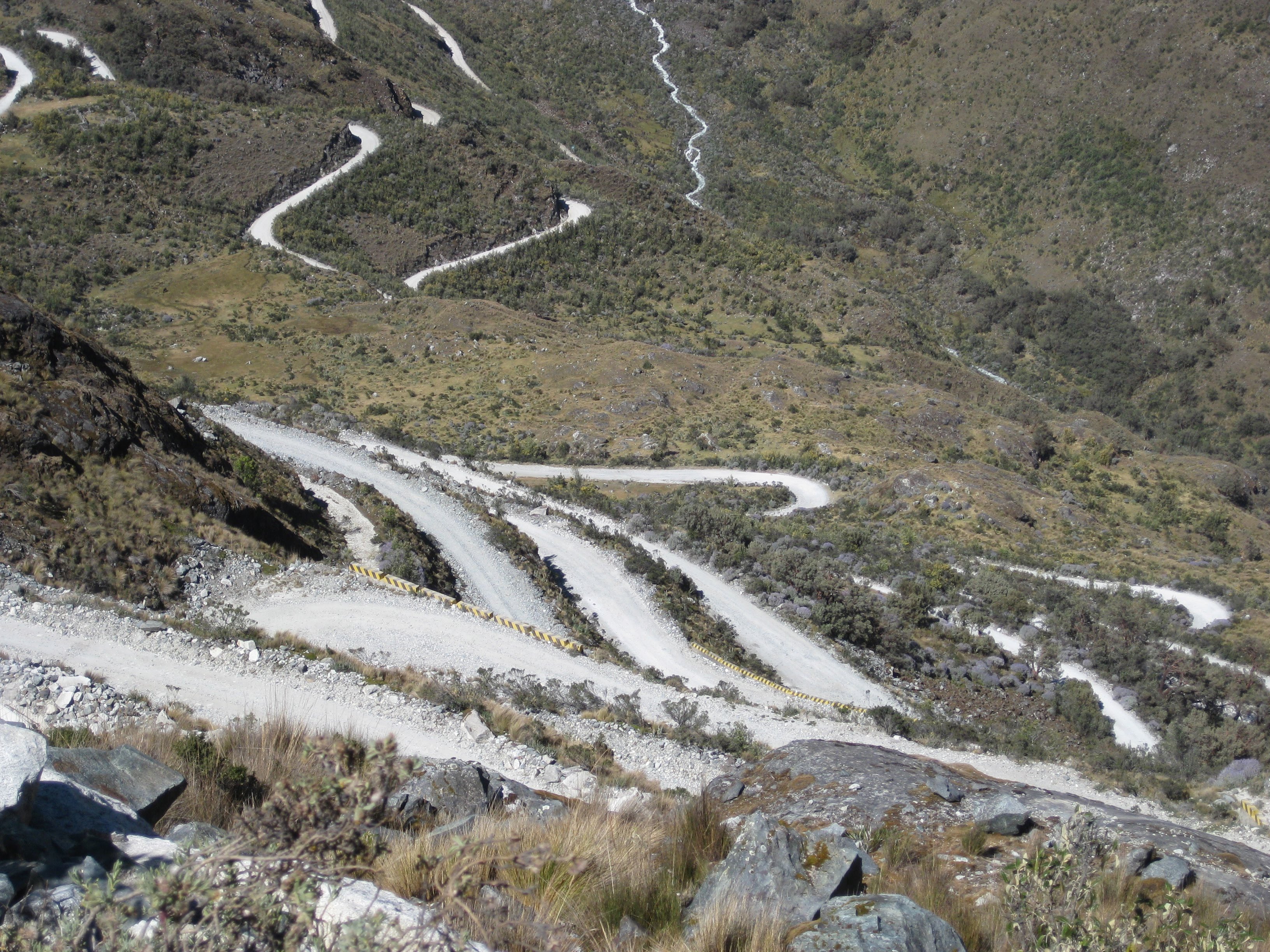
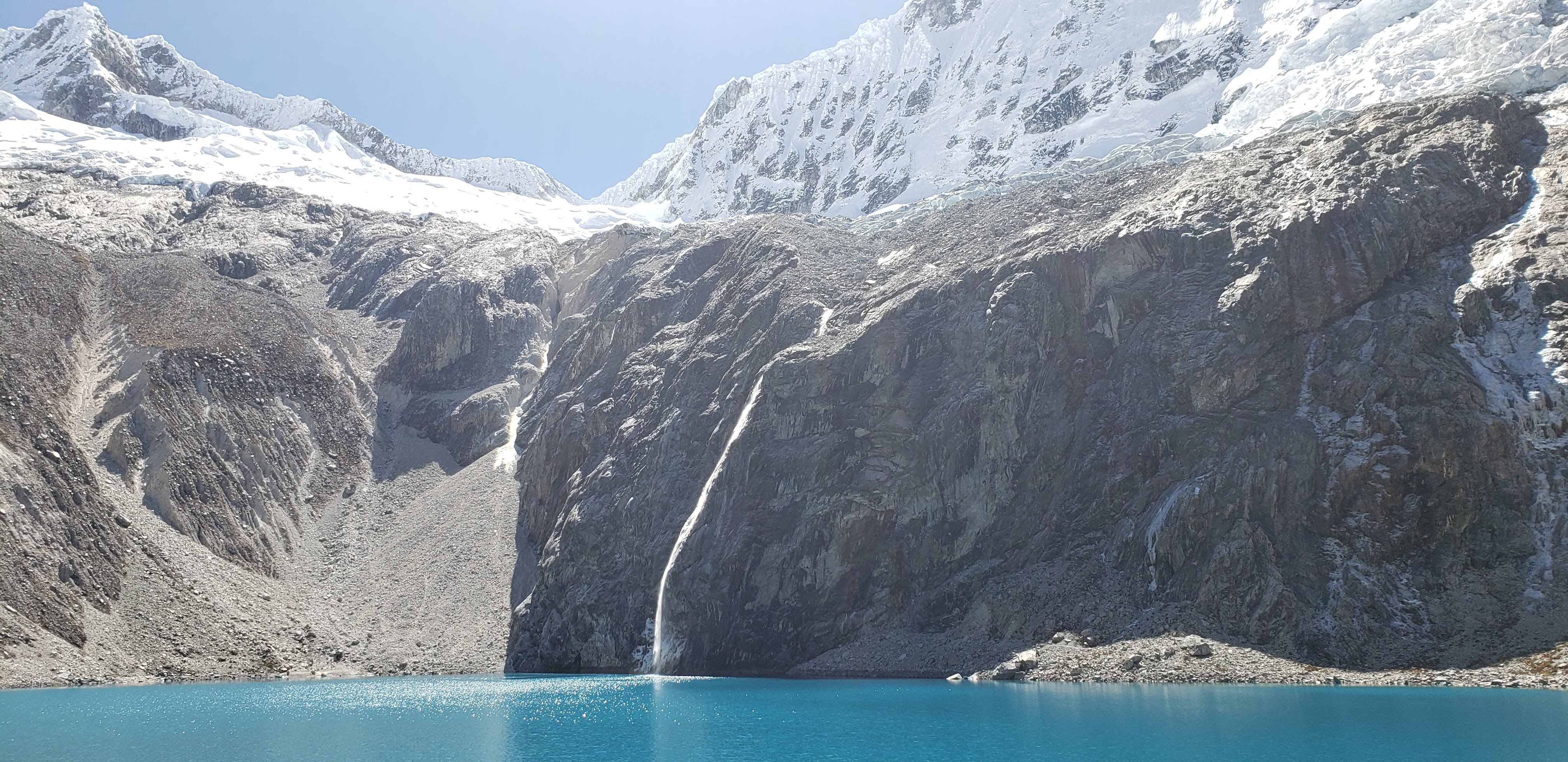
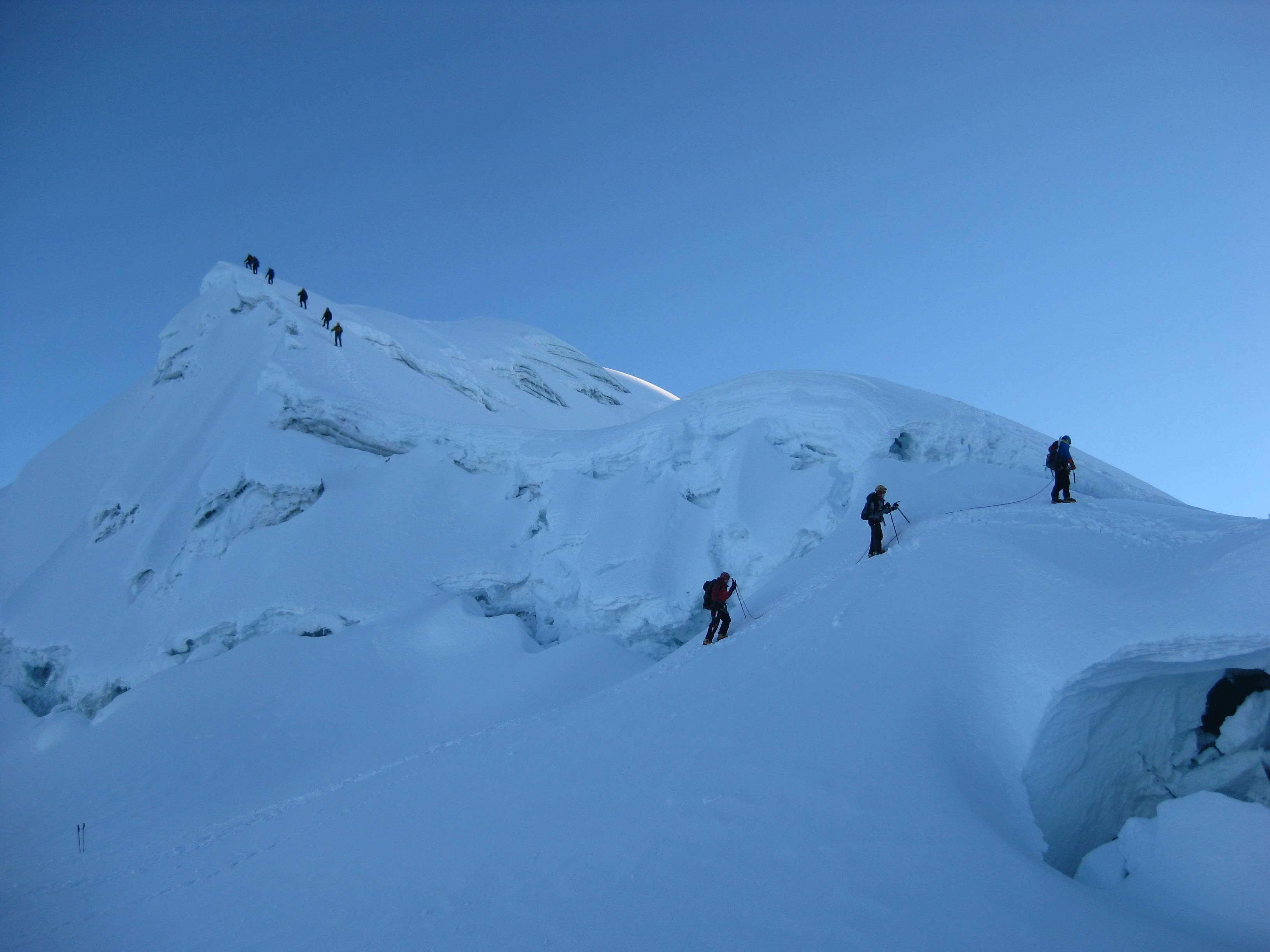

Moving into the mountain ranges, we travelled along some of the most dangerous roads that I have ever experienced, including the Paso Portachuelo Llanganuco (15,639’ high) that has numerous hairpin turns that take drivers, including freight trucks, up and over the continental divide, while connecting the Pacific and Atlantic watersheds. Peru is ranked 10th in the world for the number of dangerous roads throughout the country; this is not surprising to me. In the mountain heights, there exist lakes (such as Laguna 69 at 15,092’) that are easily trekked into with some level of acclimatization accomplished, and also a plethora of glaciated peaks for those who prefer to play in the ice and snow. We enjoyed several mountain perches on Yanapaccha (17,913’) and Vallunaraju (18,655’) where our rope-team travelled over glacier crevasses, snow bridges, and mountain ridges to be gifted access to the top of these magnificent mountains at sunrise. The mountains then held us in their moraine cradles at night under the stars. It is impossible to return from such an amazing place without fully accomplishing the reset of one’s internal compass and focus, and I look forward to introducing my son to this beautiful experience next year.
